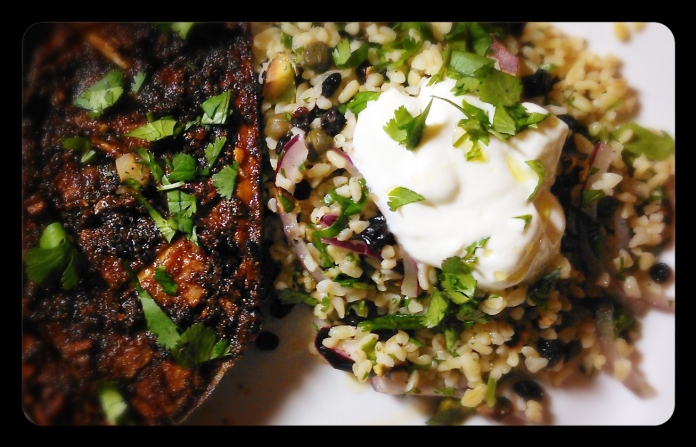Baked apples make me think of Grandma and Grandpa Mills . . .
Growing up, we had dinner with my grandparents every Sunday. There was a cafeteria style restaurant they liked to go to, and everyone’s favorite from the desert bar was the baked apple. Those baked apples were not nearly as fancy as this Baked Apple Stuffed with Candied Ginger and Almonds recipe from Jerry James Stone and Treehugger’s Green Wine Guide, but it still makes those memories float to the surface.
I had a friend over last night for a Sunday night game of intense competitive Scrabble, which was a game I always played with with my Grandmother as well. Maybe that is why this recipe seemed like the perfect fit. Unfortunately, I got a bit distracted when reducing the syrup and it turned into more of a caramel that almost candied the baked apples, but it was still quite delicious, and I supplemented it with warm maple syrup to make sure the apple was not too dry.
I served the the baked apples with maple walnut ice cream and a small glass of port. The three made quite a good winter desert combination and an excellent Scrabble treat!!
You can easily substitute the honey for another unrefined sweetener for Vegan alternative . . .
Baked Apples Stuffed with Candied Ginger and Almonds
MAKES: 4- 6 Apples, depending on the size of your apples
INGREDIENTS
- 4- 6 large apples (Rome or Braeburn)
- 1/3 cup candied ginger, chopped
- 3/4 cup almonds, toasted and chopped
- 1/4 cup brown sugar, packed
- 1/2 teaspoon vanilla extract
- 2 tablespoons honey
- 1 1/2 teaspoons lemon zest
- 1 teaspoon cinnamon
- 1/2 teaspoon ground clove
- Water, for the baking dish
Preheat oven to 350 degrees.
Combine brown sugar, vanilla and honey and mix well. Then mix in the ginger, almonds, cinnamon, clove and lemon zest, and set to one side.
Core each apple; be careful to remove all of the stem and seeds. If need be, trim the apple bottoms so that they sit steadily on a flat surface. Place the apples upright in a baking dish, and spoon the filling into hollow of each apple .
Fill the baking dish with enough water to form a 20 mm or 1/2-inch pool around the apples.
Bake for 1 hour and 15 minutes or until the apples are tender.
Transfer the apples to a serving plate with a spatula.
Pour the reaming liquid from the baking dish into a small saucepan, and cook over a medium-high heat until it becomes syrupy, about 15 minutes. This is where you need to make sure not to reduce it too long that it becomes a caramel. Drizzle the syrup over the top of each apple, and sprinkle some additional almonds and candied ginger on top.
ENJOY!!








